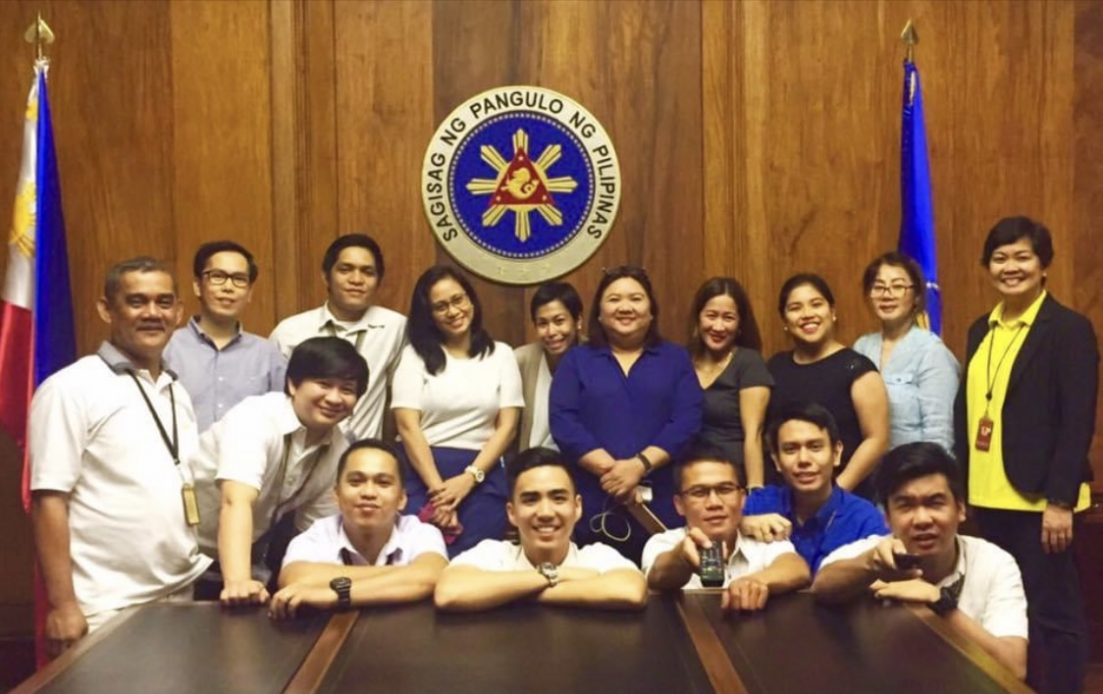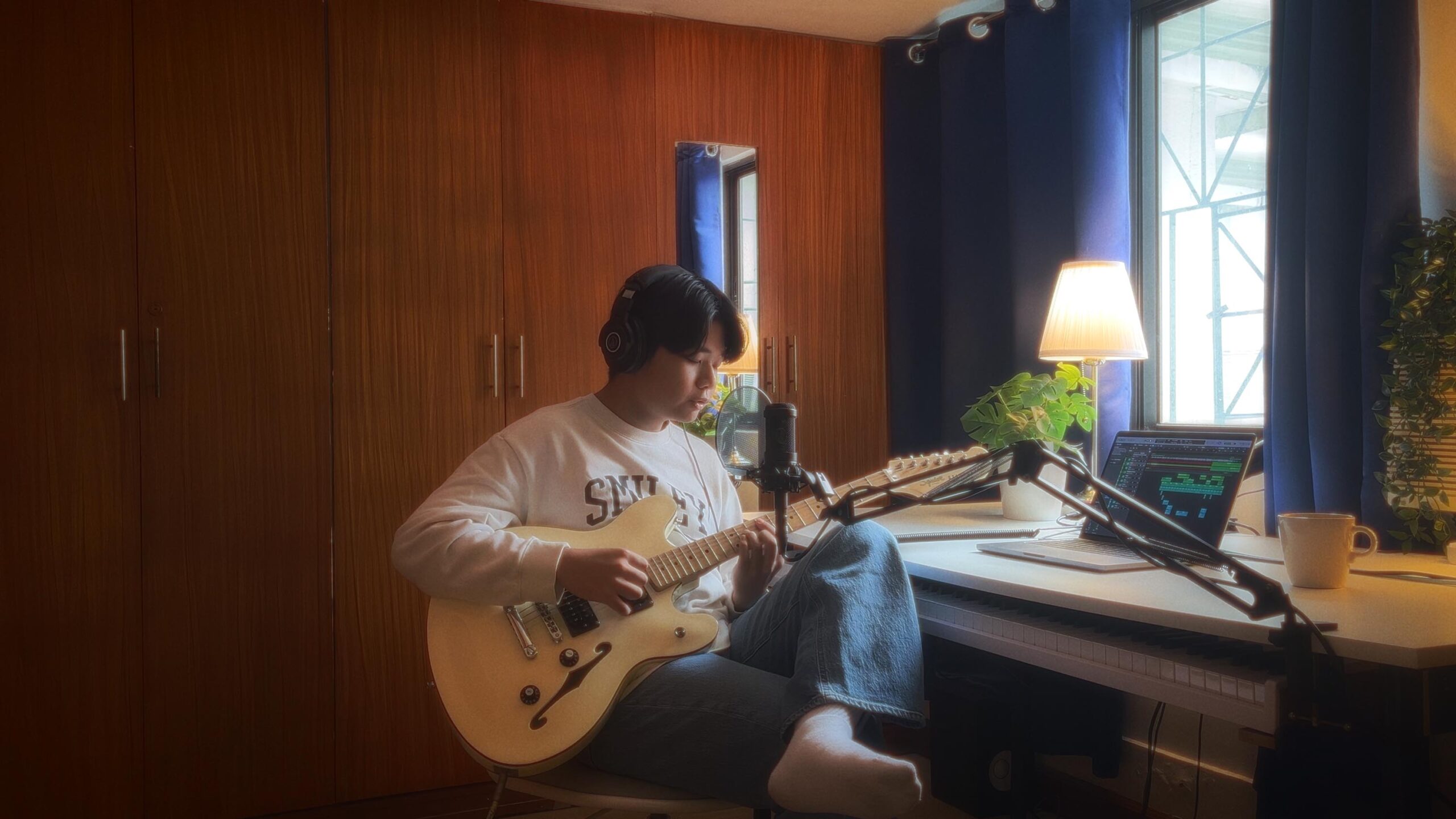
People hardly knew that he put extraordinary faith
in the young who served in his administration
I had just been offered to work with Kishore Mahbubani, Singapore’s former ambassador to the United Nations and dean of the Lee Kuan Yew School of Public Policy, when I ran into newly elected senator Benigno S. Aquino III in a mall in Ortigas. He was about to have dinner with a friend, but motioned for me to come over. I congratulated him on his victory, and was completely taken by surprise when he said, “I’m looking for a Chief of Staff—are you interested?”
While both my parents were his colleagues and friends, and one of my brothers had volunteered for his Senate campaign, I had had no professional encounters with him. The surprise must have registered on my face because he said, “Think about it for a few days, and then let’s talk.”
In hindsight, I think, ang kapal ng mukha ko to have hesitated at all: I was two years fresh out of my Master in Public Policy program, and most people who held the post of Senate Chief of Staff had multiple years of experience over me. “Madaling matuto ang bata,” he said to me by way of explanation when I came to his Times Street residence to accept the post. He wanted to build a youthful team, he said then, and what better way to start than with a young Chief of Staff?

In my early days in the Senate, as I tentatively drew up plans to recruit more staff and organize the current complement into teams, I found then Senator Aquino to be an empowering boss. He did not micromanage the way his office was run, only asking to have the final say by interviewing would-be recruits. He would ask for my recommendations, and youthful and relatively inexperienced as I was then, I felt empowered to make some important choices.
As senator, Noynoy Aquino was already known for his attention to detail. During the annual deliberations on the proposed National Budget, our fellow Senate staffers would issue a collective groan whenever he would take to the podium to interpellate the agency sponsor, pile of notes in hand, his Senate staffers ready with binders of supporting research on the sidelines. “Sabihin ninyo sa boss ninyo, tama na. Uwi na tayo,” the other Senate staffers would beg us, pointing at the clock, knowing full well that Senator Aquino could ask questions until the wee hours, especially if these had not been sufficiently answered.
What one might consider a form of orientation for the new Senate team was given by the senator himself: he brought us to the Aquino Museum in Tarlac, his hometown. As staffers who would later examine policies and their impact on democracy and governance, that trip gave us a first-hand insight on our principal’s anchor: a profound commitment to democracy and institutional integrity that was grounded on a deeply personal history.
As private as he was, these qualities were not widely known beyond our small circles, and those of us who worked for him often felt that he was largely unappreciated, overlooked in favor of showy, smooth-talking public officials who invested heavily in their shiny and carefully cultivated public personas.
“Sana one day ma-realize ng mga tao kung gaano talaga kagaling si Sir,” we would say as we transcribed interviews and open fora notes, noting his clarity of purpose and commitment, even back then.
It was a case of “be careful what you wish for” when, in September 2009, almost without warning, we found ourselves suddenly in the middle of a whirlwind presidential campaign that would ultimately end in Malacañang.
His Social Contract with the Filipino People spoke of transformational leadership, inclusive economic growth
During the presidential campaign, the old Senate team was quickly reorganized into the “Candidate’s Office.” Essentially performing the same tasks, we made sure the candidate was properly briefed, and staffers were always present with technical notes (from firsthand and credible sources) as well as political backgrounders, for all his campaign engagements.
As a candidate, Senator Aquino was adamant about having a solid platform that represented not only his own convictions, but that of his supporters, as well. When he was told that a 10-point platform would be better sounding than a 16-point one, his response was—were we not going to be a people’s campaign, and by virtue of that, shouldn’t we be able to represent all the advocacies present? Should we give up some of our core beliefs just to sound catchier?
Benigno S. Aquino III’s Social Contract with the Filipino People spoke of transformational leadership, inclusive economic growth, revitalizing the government service, gender equality, safeguarding the environment, security sector reform, and a commitment to genuine and lasting peace. It had 16 points.
This document would form the criteria for many major decisions, including which engagements to accept and what positions on major and pressing issues Senator Aquino would take.
As soon as he became President-elect, the Social Contract also became the basis for his interview questions for prospective members of the Cabinet. As I sat through those meetings, taking notes and supplying him with additional data, I listened as he explained that these are the principles he stood for, and to ask the person if he or she was willing to spend the next six years working to make sure his government would be able to fulfill these obligations.
During his first Cabinet meeting, President Benigno S. Aquino III had the staff distribute copies of his Social Contract to the newly-minted Cabinet secretaries who had taken their oaths of office with him earlier that day. It would be the basis by which the public would measure our performance for the next six years, he told us. Our programs and policies should always reflect a commitment to fulfilling these promises, he further stressed. This is why people voted for us. This is why we are here today.
As he would prove in the next six years, PNoy was not anything if not consistent.
‘Huwag na huwag kayong mang-molestiya ng tao,’ he would tell us. This was the principle behind his ‘no wang-wang’ policy
If there was anything that made PNoy squeamish, it was the thought of imposing himself on others, of being an inconvenience, even to close friends. “Huwag na huwag kayong mang-molestiya ng tao,” he would often tell us. This was the principle behind his “no wang-wang” policy—because it was unthinkable that a leader who served could rush through traffic while directly exacerbating the plight of other motorists and commuters. His Presidential Security Group eventually learned the art of weaving through traffic with minimal disturbance, of parking the convoy along his favorite restaurants without inconveniencing other clients, and of asking people to make way for the Presidential entourage in a manner that was as unobtrusive as possible, always polite, almost apologetic, and absolutely reflective of the President that they served.

During out-of-Palace engagements, his office would have to turn down repeatedly invitations for meals hosted by public officials, businessmen, sometimes even his own friends and former colleagues. While this did give him a bit of breathing space, some private time where he could enjoy his food in peace, his real reason was more practical: inviting him meant feeding our entire entourage composed of his security detail, close-in staff, photographers, and videographers, as well, and that was a burden he was reluctant to foist on anyone, friend or otherwise.
In my conversations with people in the days following PNoy’s passing, one common realization they shared was how much of a private person he actually was. He was not the kind of public official who liked to have his private moments photographed, much less publicized. In a culture and at a time where oversharing has become a favorite pastime, this made him come across as devoid of emotion, aloof, and “without charisma.”
The truth is, PNoy had a real aversion to doing things for show. A common response to well-meaning advice on polishing his public image was: “Ito ako, eh.” With PNoy, what you saw was exactly what you got.
When advisers would point out that he didn’t always need to mention the downside, he would retort: ‘So you prefer the discounted version of the truth?’
It was this determination to always paint a truthful—not in any way, shape, or form contrived—picture that lay behind his obsession with detail. When advisers would point out that he didn’t always need to mention the downside along with the upside, he would be quick to retort: “So you prefer the discounted version of the truth?”
It didn’t matter that too much information made the message infinitely less sexy; our responsibility was to make sure that we did not deprive people of the entire truth, no matter how ugly or complex it might be.
“Show, don’t tell” is an old adage followed by writers, but it could have applied as a life principle to PNoy, as well. While he was not “cheesy” about thanking staffers for their work and effort, he was not without his own unique ways of showing his appreciation. On an official trip to Japan, I remarked on the beautiful origami cranes that the hotel would leave on our pillows every evening. It symbolized hope, he explained, picking up one paper crane and handing it to me. Later on, towards the end of the trip, one of his security detail approached me with a handful more—“Bigay daw sa iyo, sabi ni Sir.”
The preparations for the annual State of the Nation Address were the height of stress for us Presidential staffers. For over a month, we would burrow through boxes of data, fact checking, proofreading, and calling agency contacts to ask them to sign off on their numbers again and again. Stressful as the long nights in the office might have been, they were nothing compared to the stress of having to defend our work to the President, who was more meticulous, and whose eyes were sharper than any of ours. Suffice it to say that that experience would form some of the most character-building ones of our lives.
The number of songs one was asked to perform was almost always commensurate to the amount of scolding
After all the work was done, and all the data packed away, the President would gather his staff and Cabinet officials to thank everyone the best way he knew how: by feeding us, and singing with us. As if he knew how much anxiety and anguish his “pep talks” caused, the number of songs one was asked to perform was almost always commensurate to the amount of scolding that person had received.
Perhaps due to the fact that he grew up as the only son in a family of strong-willed women, PNoy did not only treat women with utmost respect; he also placed a special premium on their friendship and counsel.
PNoy’s term saw a record number of females in the Cabinet, including Leila De Lima in the traditionally male-dominated post of Justice Secretary. His Presidency also saw a woman at the helm of the Bureau of Internal Revenue, the Supreme Court, the Office of the Ombudsman, and the Commission on Audit.
More than being a gentleman (he would always let all the women in the room get in line before him at a buffet table—ladies first, he would say as he motioned for you to step into the queue in front of him), PNoy was not fazed by the presence of fierce, accomplished women. In fact, it is these women who had the special license to take up difficult issues with him, or had access to very personal information.
The women close to PNoy were a force to reckon with, but he was man enough to celebrate their accomplishments
No doubt, the women close to PNoy were a force to reckon with, but he was man enough to celebrate their accomplishments by entrusting them with the most critical, and sensitive of responsibilities: tax collection, political organization, the peace process, judicial reform, disaster response and mitigation, and as custodian of his personal and professional time.
PNoy was remarkably mindful of the delineation between the Presidency as an institution, and his persona as the individual who was given the duty of occupying the Office. It was his ability to acknowledge and respect this important distinction that served as his motivation to perform as President. It was a job he was given by an authority higher than himself—the Filipino people. Later on, this was also what enabled him to leave the office in peace, without any desire to cling to power or retain any of its trappings or vestiges. It was, after all, an honor vested in him by the people, and he respected their right to vest it later on in someone else.
As Presidential staffers, we were expected to aim higher than merely fulfilling what was required. “Hindi puwede ang basta puwede na (Simply okay is not enough),” he would tell us. “Kaya niyo na bang panindigan yan? (Can you stand on that with conviction?)” was another common question he would ask, when preparing to accept the nth draft of a speech, or briefer, or set of talk points, after it had gone through his painstaking revisions.
This was also what enabled him to leave the office in peace, without any desire to cling to power
Even the bravest of war heroes and the fiercest of advocates would arrive nervously at the Palace when called to a briefing, armed with binders of data and reviewing and re-analyzing numbers until the last possible minute, anticipating the barrage of questions that the President would be sure to unleash. “Whoever put this in here is doing all of us a disservice,” he would say when uncovering mistakes in calculation, typographical errors, or misused data. For PNoy, the Presidency was a responsibility he took seriously. And he made sure everyone else who served with him was reminded of this, every day.
It was not about disappointing or displeasing him, the person who occupied the Office of the President; it was about performing a sworn duty to bring dignity and excellence to the Presidency—an institution that deserved nothing less.
In the last few days, I have had the privilege of reading tributes written by several young people who served with us during the PNoy Presidency.
“PNoy (did) not think of himself as a mentor, but in the end so many of us (became) his students in leadership and public service,” writes Raf Ignacio, who, with my former student Cedrik Forbes, served as policy staffers and alternates to Atty. Jun Delantar. Atty. Delantar was President Aquino’s main “bodyman,” or jokingly, “bagman”—literally, the man with The Bag, an unwieldy filing cabinet on wheels that contained the briefing materials for the day, with other essentials like maps of the Philippines and a dog-eared, highlighted copy of the 1987 Philippine Constitution.
‘Inihalal tayo hindi para gawin ang madali, kundi para gawin ang tama’
President Benigno S Aquino III was a risk taker. As a staffer, I watched him make a number of difficult, even unpopular, decisions, buttressed by a conviction that he was doing what he believed was right. “Inihalal tayo hindi para gawin ang madali, kundi para gawin ang tama,” he used to say. It was this brand of courage that drew young people to him. The willingness to stake his entire being on his personal principles made him an unwitting “whisperer” to the young and idealistic.
More than this, in a traditional environment that places a premium on seniority and experience, PNoy put extraordinary faith in the young people who served in his administration.
It didn’t matter what you did, whether you were the head of a large bureaucracy, a four-star general, or a staffer that stuck tabs to Presidential briefing kits: the wrath that would be unleashed on you for sloppy work would be of equal intensity. The fact that the President himself demanded accountability for your work made everybody who worked in the PNoy government feel relevant, regardless of position. It was never about being perfect. It was about doing your best.

For President Aquino, anyone who was willing to do the work could have a role to play in his government. He pushed the young staffers in government to their limits, oftentimes making us feel that we were being asked to do what was humanly possible. But at every opportunity, he reminded us why: it was because our work mattered. It was because we mattered. And that made all the difference.
It was this belief that we were given the chance to play a part in something bigger than ourselves that we drew on—for strength, for inspiration, and for courage, every day. It is what we find ourselves drawing on today, in the midst of the void created by his absence.
Kahit minsan, hindi kami tinanong ni PNoy kung ano ang ambag namin. Sa halip ay binigyan niya kami ng pagkakataon na mag-ambag, at hinikayat na pagbutihin ang pag-ambag, sa iisang pangarap para sa Pilipinas, at para sa Pilipino. (Not even once did PNoy ask us what our personal contribution would be. Instead, he gave us the chance to contribute and encouraged us to do it to our utmost ability—towards one dream of a nation, for the Filipino.)
“The true measure of success is your ability to train your successor,” PNoy used to say. Benigno S. Aquino III was no scholar of leadership. Indeed, we who worked for him have no recollection of him lecturing us on the tenets of being a leader. Genuine leadership, after all, is best lived out in practice, not studied, not read about. PNoy may not have had children of his own, but the mark of his leadership can be seen in the quiet dignity, diligence and intestinal fortitude that he ingrained in the young people who served during his Presidency, who are now making their way out into the world today.
I ran into Kishore Mahbubani years later, during one of President Aquino’s official trips, and he said to me, as I shook his hand after being introduced by my boss: “Well, I don’t feel so bad about you declining the position (in my office)—it seems you had a better offer.”

Originally published in thediarist.ph
Main photo: Office of the President staff during the Aquino administration, ‘Hindi pwede ang basta pwede na’ (Photo from Rochelle Ahorro Facebook)





